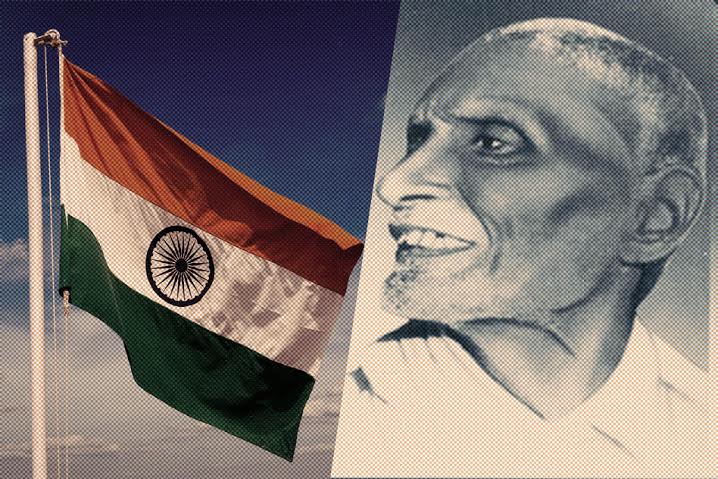Image Source: viswatelugusangamam
On 22 July, 1947, the Constitution Drafting Committee resolved to approve the tricolour as the Republic of India’s national flag. Our national flag was designed by Shri. Pingali Venkayya. Venkayya’s version was first designed for the Indian National Congress and subsequently modified in 1947.
According to The Hindu, “Pingali Venkayya was an authority in geology, agriculture and also an educationist who set up an educational institution in Machilipatnam. He, however, died in poverty in 1963 and was largely forgotten by the society and by his own party, the Congress.” A postage stamp was issued to commemorate him in 2009
Dr. Sarvepalli Radhakrishnan, who later became India’s first Vice President and second President, clarified the adopted flag and described its significance as follows:
“Bhagwa or the saffron colour denotes renunciation or disinterestedness. Our leaders must be indifferent to material gains and dedicate themselves to their work.
The white in the centre is light, the path of truth to guide our conduct.
The green shows our relation to (the) soil, our relation to the plant life here, on which all other life depends.
The “Ashoka Chakra” in the centre of the white is the wheel of the law of dharma. Truth or satya, dharma or virtue ought to be the controlling principle of those who work under this flag.
Again, the wheel denotes motion. There is death in stagnation. There is life in movement. India should no more resist change, it must move and go forward. The wheel represents the dynamism of a peaceful change.”











